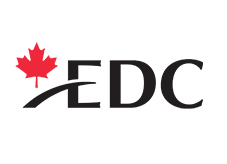Sales training and tools for your sales team
When you are ready to launch a product, you must ensure that your sales team is prepared to sell it. Whether you are the only salesperson at your startup or you have a larger sales team, some sales training is required. You need sales tools in order to convert prospects into customers.
Arm your sales team with knowledge before creating sales tools
Before creating any sales tools, arm your sales team with the required knowledge to speak to prospects successfully. Distribute this information through training about the new release of the product, and continually reinforce this knowledge to ensure that it stays fresh in their minds.
This information should include:
Who are you selling to?
Your sales team wants to know who it is they are selling to—including the prospects’ profile, where to find them and how to target them. Review with your team the buyer persona for your product so they can easily target the right buyer.
What pain does the product solve for customers?
Using market research, your sales team can become versed in the buyers’ market problems. This will let prospects know that they are speaking to someone who understands their position.
Who is already using the product?
Provide your sales team with customer success stories to build product credibility. Customers like to hear that someone like them is already using the offering.
Who is the competition?
Knowing your competition is important when speaking to prospects. By understanding the competitive landscape and how your product compares, the sales team can manage any queries or sales-related objections that arise.
Why should I choose your product?
Every sale can face objections from prospects (for example, “it’s too expensive,” or “I have another product that does something similar”). Anticipate possible objections and outline them to your team, and build responses to prepare them for those customer situations.
Knowing which sales tools to build
During the sales process, the prospect will go through several buying stages. At each stage of the buying process, employ specific sales tools to in order to help the prospect move to the next stage. Understanding your buyer will help you discern what tools would provide the most benefit.
Use the following example as a template to identify what tools your company might need during each different buying stage. Note the tools mentioned in this chart are explained in greater detail below.
| Stage | Tool required |
| Initial website visit | Website content |
| Initial investigative call with the sales team | Sales sheet |
| Initial presentation | Sales presentation Demo of product |
| Trial period | Free trial version |
| Negotiation/close | Customer success stories |
Sales team tools
Set up some or all of the following tools to support your sales team during the buying process.
Sales sheets
Sales sheets (about one page each) are brief outlines of your product. They describe your product positioning and the benefits you offer your users. You could produce these sales sheets in PDF format to email to prospects.
Sales presentations
These PowerPoint slides introduce your company and product. They outline your product’s benefits, build credibility through customer success stories and convince the customer to buy. Use sales presentations in the initial meeting with potential customers.
Sales demos
Your sales team will require a way to demonstrate the product in action. This will vary according to the type of product being built. For example, a demo might take one of the following forms:
- A mini-prototype of your hardware to highlight its capabilities
- A laptop software installation to showcase your program’s features
- A log-in of a fictional customer to demonstrate your online service
Free trials as sales tools
These allow the customer to try the product for a short time before they decide to purchase (or not). This might be a version of your offering that expires after a specified period.
Customer success stories
Prospects love to learn about people like them who have used your product. Success stories include the customer’s background, their specific market problems and how your product solved those pains. You could also provide references from those customers who would be willing to speak to your prospects about their success with your product.
Validating sales tools is part of the product management process
As with every other part of the product management process, it is important to validate sales tools. Monitor how well each tool works. Some tools might not assist with the process and will need to be improved or retired. Or you might identify areas where new sales tools would be useful.
Win-loss analysis is an excellent way to evaluate your sales process and tools. Ask prospects which tools they were looking for or found valuable during the buying process.
As you update and re-release your product, revise your sales tools as you learn more about your buyers and your market.

